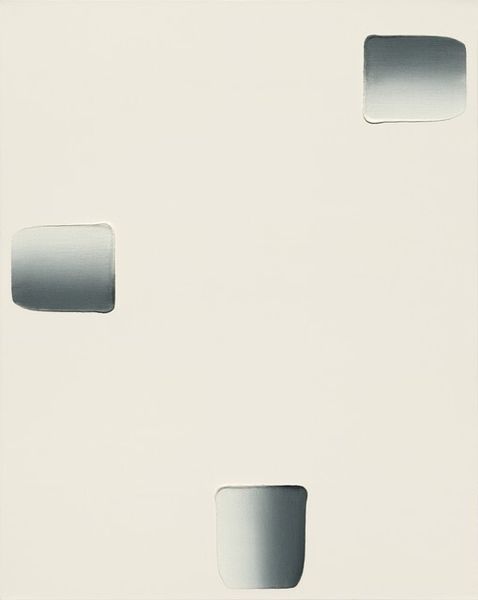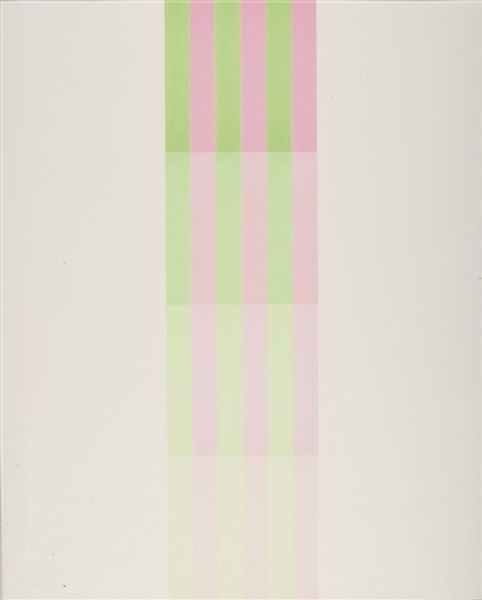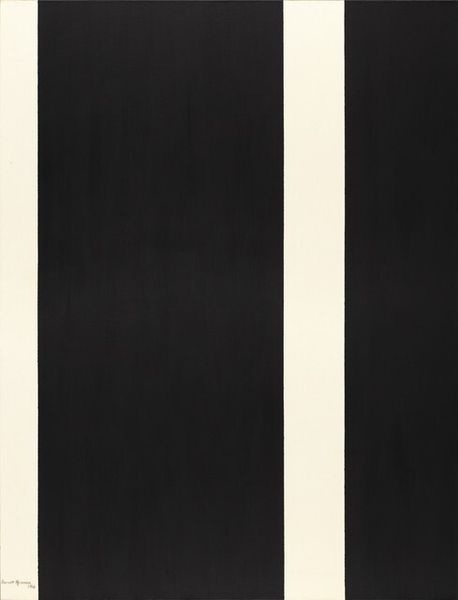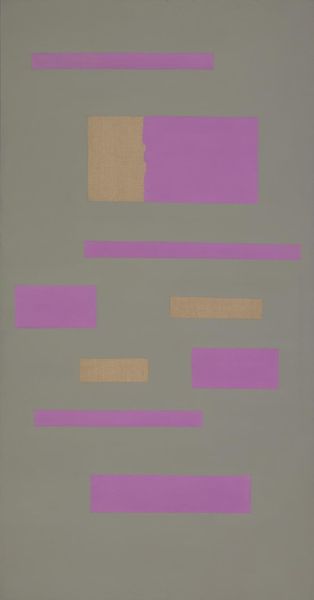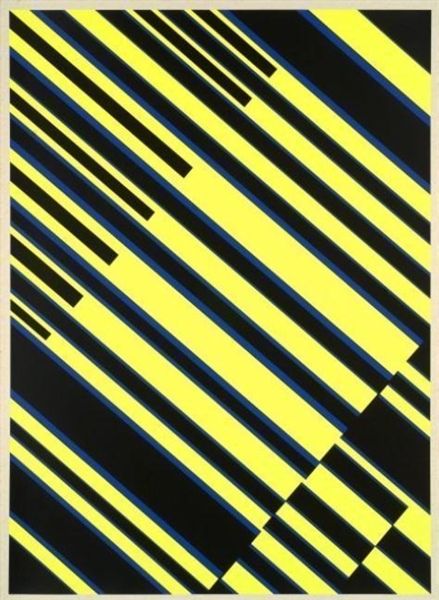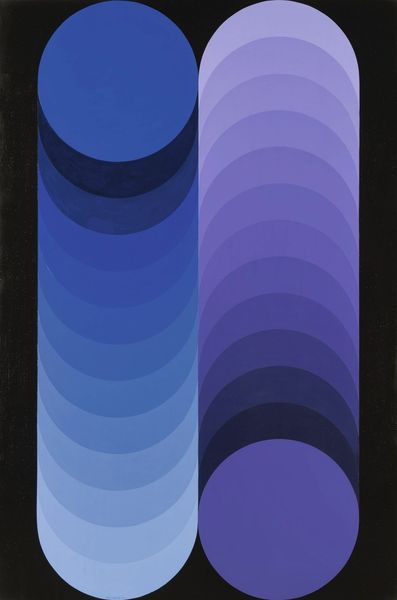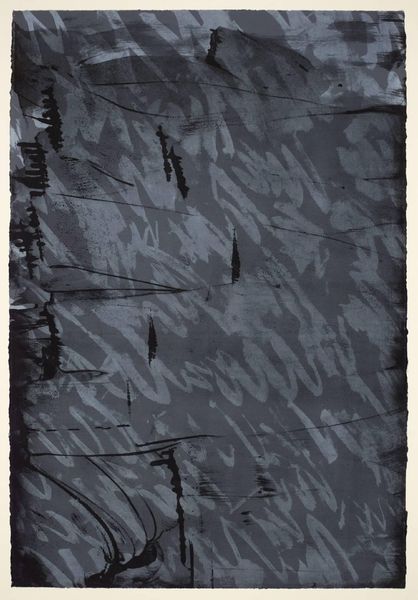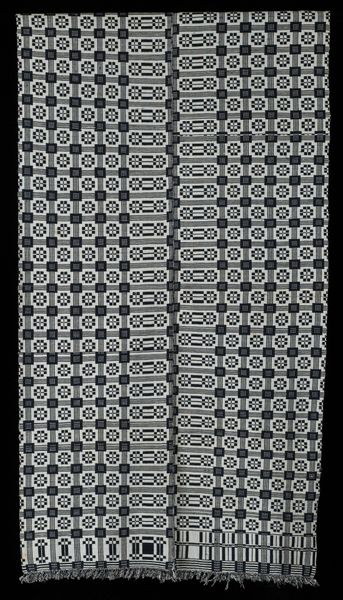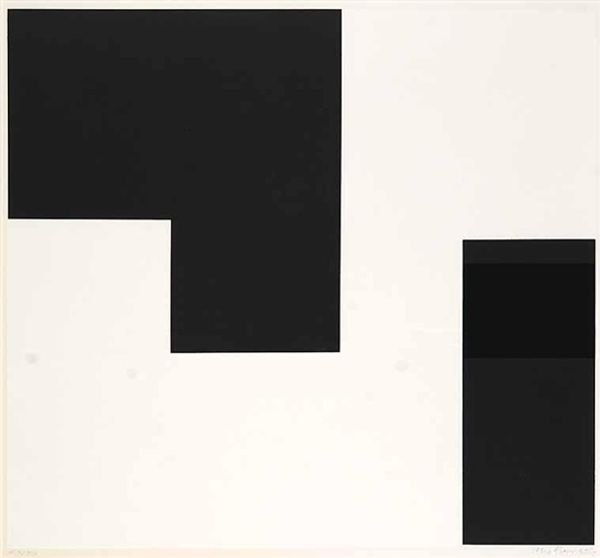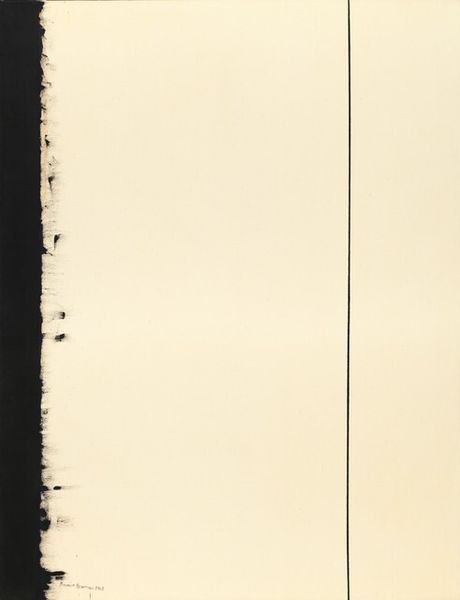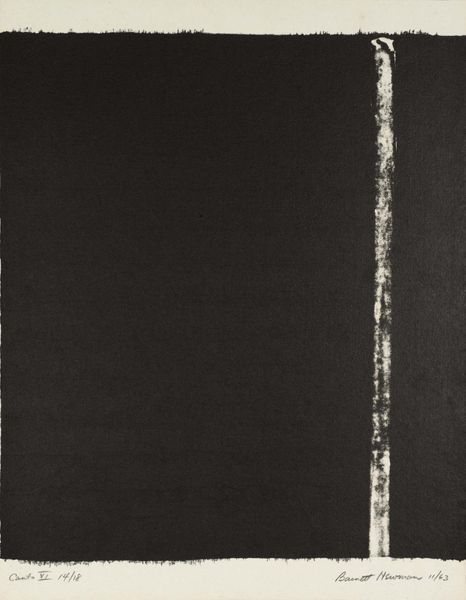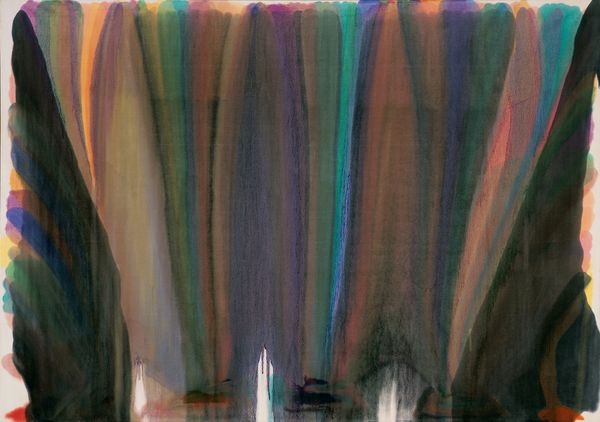
print, etching, graphite
#
abstract-expressionism
# print
#
etching
#
form
#
geometric
#
abstract-art
#
line
#
graphite
#
abstract art
#
monochrome
Copyright: National Gallery of Art: CC0 1.0
Editor: Here we have Garo Antreasian's "Untitled" print from 1961, made with etching and graphite. The repeating geometric shapes against the dark background feel quite stark and formal. What do you see when you look at this work? Curator: The relationships between form and line are compelling. Note the stark contrast between the white vertical line and the soft texture of the purple strokes and black circular forms. Do you observe how the artist plays with positive and negative space, creating rhythm through repetition and variation? Editor: Yes, I see how the artist arranged the circles to imply depth even though it’s a two-dimensional surface. It's interesting how the subtle gradations within each circle contribute to the sense of volume, though they're obviously flat. Curator: Precisely. This deliberate tension between flatness and depth engages the viewer. The success of the work rests in this mastery, with the composition finding harmony from potentially dissonant visual elements. The linear elements create a scaffolding, almost as a frame for the softer elements. Editor: So, you are suggesting it's the artist's control and composition of these shapes that give the print its power. Not necessarily the meaning behind them. Curator: Indeed. One might even suggest this is purely an exercise in formal arrangements; each mark contributes to the unity. Editor: That's really interesting. I never thought about approaching abstract art that way, just looking at the forms themselves and how they interact. Curator: By appreciating these purely formal relations, one may begin to recognize its beauty without relying on symbolic interpretation. This careful balance gives the work an energy that perhaps was not initially obvious.
Comments
No comments
Be the first to comment and join the conversation on the ultimate creative platform.
